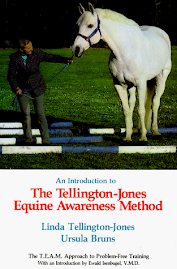


"The Trek" (P. L. Goodman, The Trakehner Horse - A History)
But history was to deal the Trakehner a nearly fatal blow. The breed had easily recovered from their population being halved during World War I, but in October of 1944, as World War II was in its final stages and the Soviets were closing in on the lush and beautiful area around Trakehnen, orders came to evacuate the horses from the Trakehnen Stud. About 800 of the best horses were hastily transferred both by rail and by foot, in a rather orderly manner, but unfortunately they did not go far enough west. Most of them, together with all their documentation, eventually fell into the hands of the Russian occupation forces and were shipped to Russia. The private breeders and their horses, however, were not allowed to leave until January of 1945, when the Russians had broken through the last of the German lines. What followed was a horror story that went down in history as "The Trek". Hitching their precious breeding stock to wagons laden with personal possessions and all the feed they could carry, these proud East Prussians fled, some 800 horses strong. They were mostly women, children, and elderly people, and they were leaving behind their whole lives, bringing along only what their wagons could hold. It was the dead of winter. Snow was deep upon the ground, and the broodmares were heavy with foal. Many horses were left behind to be claimed by the advancing Soviets and many were lost or let loose along the way to be eventually taken in by the conquering troops or to die.
The East Prussians headed west, literally running for their lives. They could not stop when mares lost their foals or horses went lame or became ill. Their feed ran out and the horses had to live on what they could scavenge along the way. For two and a half months and 600 miles the nightmare continued, while the refugees were constantly pursued by Soviet troops and strafed by Soviet planes. At one time, it looked like the East Prussians had reached the end. The Soviets had them surrounded on the shores of the frozen Baltic Sea. The only escape was across the treacherous expanse of ice, so across they went at times knee deep in the water covering the ice galloping to stay ahead of the ice breaking behind them. If any dared to stop or attempt to dodge the fire from the Russian planes overhead, they were doomed to sink helplessly into the freezing water. Many did not make it across. At last the survivors limped into West Germany, the once proud and beautiful 800 horses reduced to less than 100 pitiful skeletons, carrying open wounds from shrapnel, and with burlap bags frozen to their feet because they could not stop to replace lost or worn out shoes, even if they could have been located.
Only the hardiest have survived.
Only a few hundred Trakehner horses of the original 80,000 in East Prussia were available by the time the rebuilding process began, for though between the Trek and various other evacuation attempts, almost 1000 horses had actually reached the safety of West Germany, most of them were eventually lost to the breed. Slowly many of the surviving Trakehners were located and accounted for under the able leadership of the Verband's first president, Baron von Schroetter, and its manager, Dr. Fritz Schilke.
In 1950, the German Federal Government recognized the great effort being made by these breeders to preserve their East Prussian heritage and agreed to join with the government of the state of Lower Saxony in providing support. Occasionally, as the East Prussian Stud Book Society and the Main Stud at Trakehnen did before it, the Trakehner Verband still uses carefully selected Thoroughbred and Arabian stallions and mares to improve and refine the breed, but only Thoroughbred and Arab blood is used.
The famous Trakehnen- born chestnut stallion, Abglanz, for example, renowned for his ability to sire performance horses, was not only a major sire in the modern Trakehner breed but founded a very important line of Hanoverian stallions as well. Another example is the United States Dressage Federation 1983 Intermediaire I champion, Chrysos, who is a Westphalian stallion. He was sired by the Trakehner stallion Condus.






























































No comments:
Post a Comment